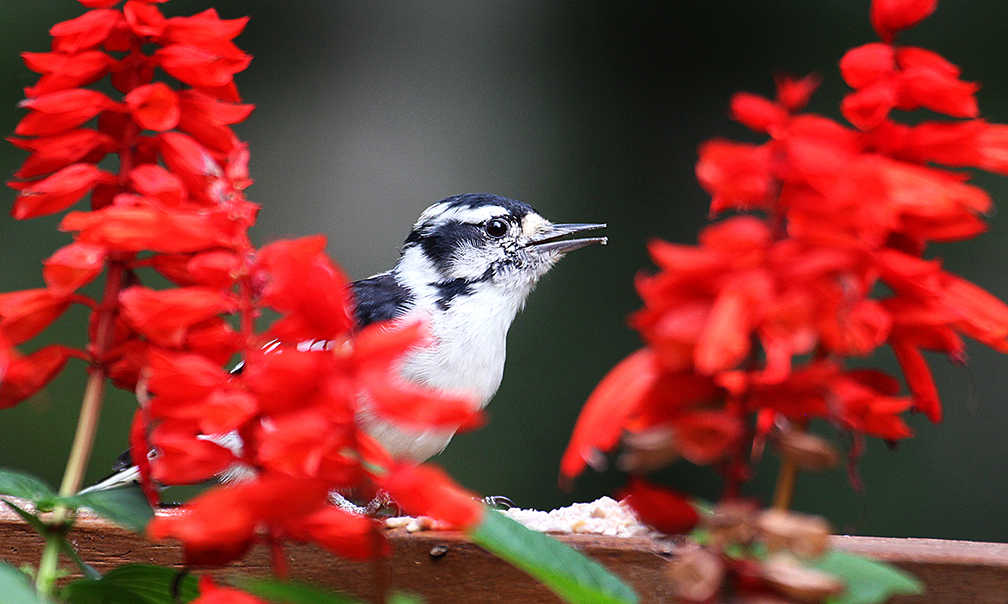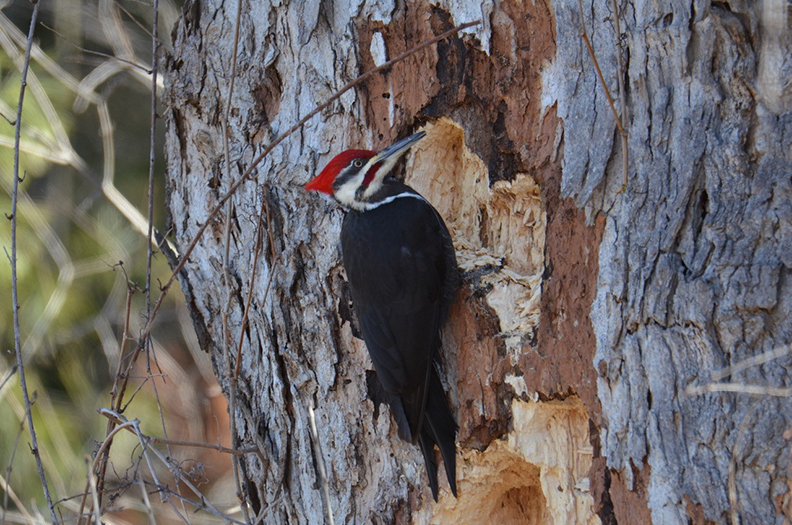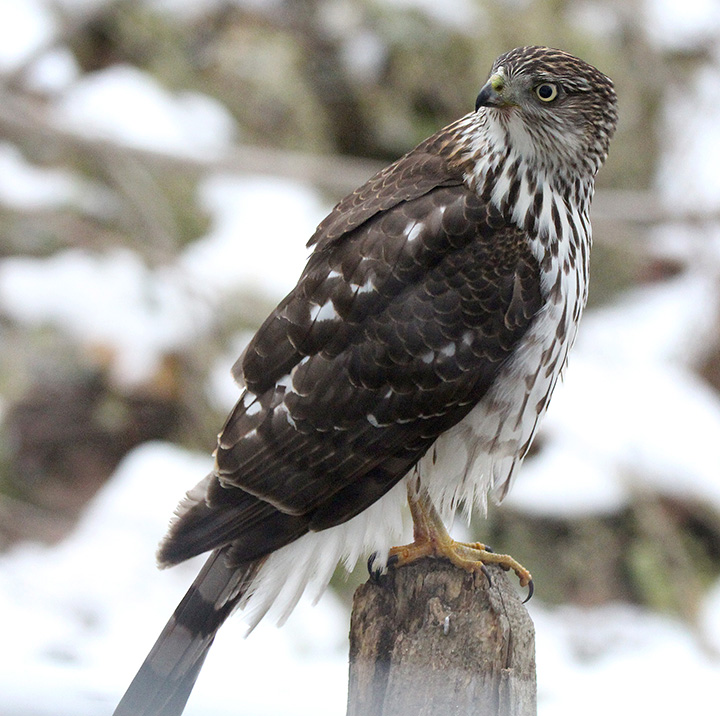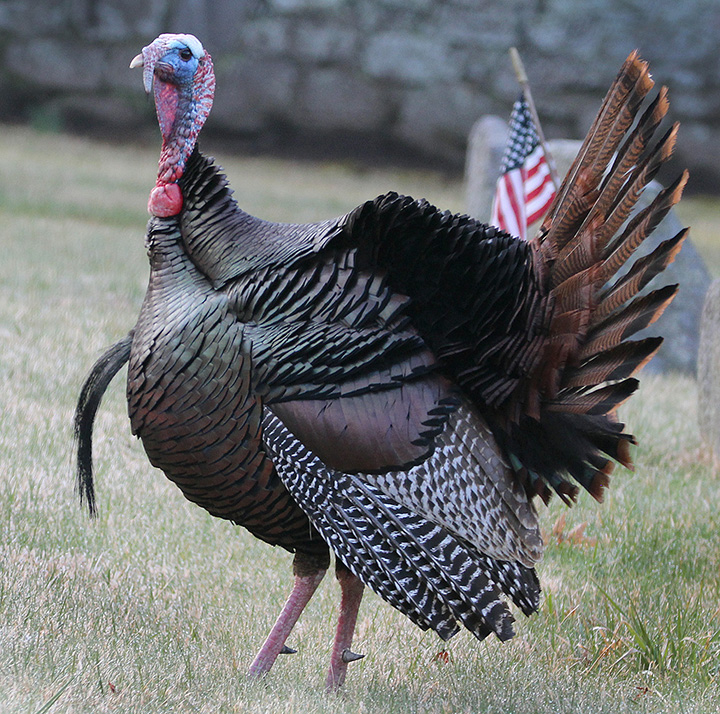A Fall Flurry Of Birds

A downy woodpecker grabs some shelled sunflower seeds from a deck railing in New England last week. Chris Bosak Photo

by Chris Bosak
Weirs Times Columnist
It was one of those birding mornings that start out great and only gets better. And I never left the kitchen.
The rain was steady and relentless, but the birds didn’t mind. It started with the usual — but welcomed — suspects at the feeder, such as chickadees, tufted titmice, white-breasted nuthatches, American goldfinches, northern cardinals and a downy woodpecker.
Suddenly, a flash of black and white caught my eye at the back edge of the yard. If I had seen just black, I would have assumed it was a Common Grackle and not given it a second look. But a largish black and white bird? I had my suspicions, but grabbed the binoculars to confirm. Yes, indeed, a male eastern towhee.
I hadn’t seen a towhee in the yard since the spring, so the handsome bird was a nice addition to day’s list of birds. Male eastern towhees are largely black with white bellies and rusty flanks. It was formerly called rufous-sided towhee to reflect the interesting color on its sides. Female eastern towhees are similarly patterned, but light brown instead of black.
The fall flurry in the rain didn’t stop there, though. I was watching the goldfinches pick apart the heads of coneflowers and back-eyed Susans when another small bird in the garden caught my eye. I saw it just long enough to know it was some type of warbler before it disappeared under the coneflower leaves. Fall warblers are notoriously difficult to identify since many do not sport their spring plumage and immatures rarely look like adult warblers. The small bird popped out of the vegetation long enough for me to identify it as a common yellowthroat.
A bit deeper into the yard I noticed a few yellow-rumped warblers. They can often be seen in large numbers during the fall migration.
A lingering catbird skulked in the bushes behind the warblers.
Then, to cap the morning, I heard a familiar song I hadn’t heard in several months. From around the corner, a bird sang “old sam peabody, peabody, peabody.” Yes, white-throated sparrows are back and they will be common sights at our feeders throughout winter and into early spring. They often visit the ground under feeders with dark-eyed juncos. So far I haven’t seen the juncos, but I’m sure they are not far behind.
To top it off, a few hummingbirds came around to sip from the feeder and the salvia that is still in full bloom on the deck.
It was a great flurry of fall birding activity. Birding is all about timing — whether it’s at the feeder or in the field. One minute there is nothing, the next minute it’s hard to keep them all straight.
Chris Bosak may be reached at chrisbosak26@gmail.com or through his website www.birdsofnewengland.com



